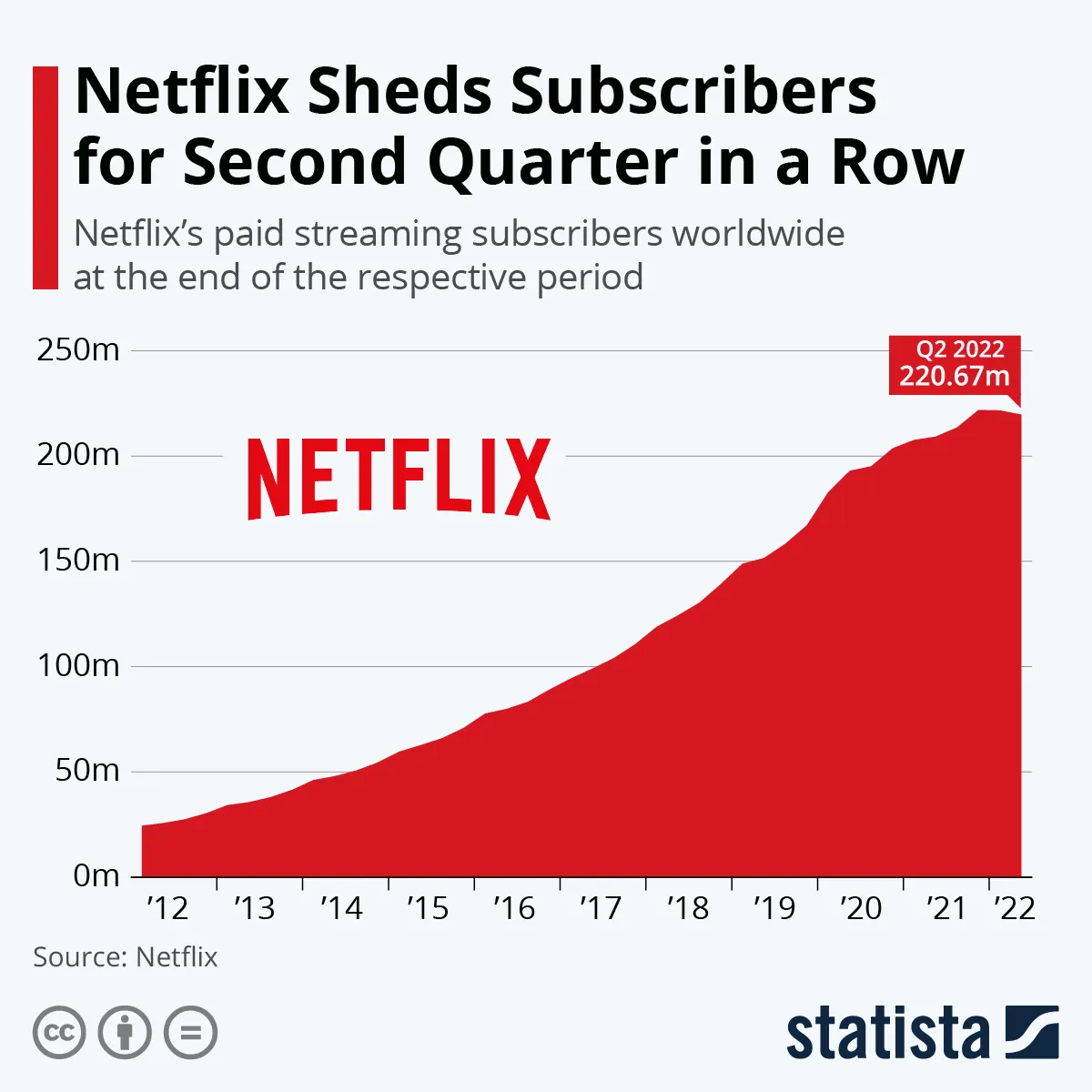The ability to solve tough problems isn’t an innate talent or a magic act – it’s a process. Every top consultant is taught a step-by-step framework to break down problems and solve them in a data-driven way.
Today, we’ll teach you that process so you can apply it to every challenge, whether you’re ordering lunch or recommending a strategic pivot for your business.
Step 1: Describe the context
Describing the context of your problem can be broken down into three sub-steps: the situation, the complication, and the critical question. We’ll use a hypothetical example from Netflix to flesh this out.
The situation

Netflix subscriber rates are dropping, resulting in decreased revenue quarter over quarter (the company’s most important metric).
The complication
Consumers have shown to be resistant to increased prices, so the company is looking for other sources of revenue to make up for subscription shortfalls.
The critical question
Should Netflix incorporate ads into its platform as a way to make up for lost subscription revenue?
Step 2: State the hypothesis
In the second step, you lay out your hypothesis – in other words, what you think the right answer could be to your problem.
Don’t worry. You don’t have to be right. Laying out your hypothesis will help you determine whether you have the supporting evidence to move forward with your recommendation.
In our Netflix example, the hypothesis could be: “Netflix should incorporate ads for a lower price than the standard subscription.”
Step 3: Lay out the supporting reasons for your hypothesis
In the third step, you list the reasons that you think your hypothesis will work.
In our Netflix example, this could be:
- We will attract new consumers who can’t buy at our highest price point
- We will gain enough advertiser revenue to make up for falling subscription prices
- We will be able to uphold our strong brand reputation through funding more original content
Step 4: Find supporting evidence and data for each of your reasons
Step four is where the rubber meets the road on your hypothesis.
For each of your reasons, you need to conduct research to determine whether it holds up. For example, in finding data for your first reason (“we will attract new consumers who can’t buy at our highest price point”), you might:
- Conduct user surveys to determine price sensitivity for streaming platforms
- Analyze the market to determine the total addressable market of people who are seeking a cheaper streaming option
- Look at competitors to determine their breakdown of premium vs. non-premium users
Step 5: Bring it all together

Once you’ve done the research on the reasons behind your hypothesis, you have the data to either recommend a solution – or go back to the drawing board.
In many cases, some of your reasoning will hold up, while some of it won’t. That’s where you have to use your judgment to weigh the pros and cons of a decision. For example, Netflix may be able to increase its subscriber numbers and raise advertising revenue, but the losses in brand equity may cause it to lose ground to similar competitors over time.
–
Want to learn more about solving difficult problems? Sign up for Problem Solving with Ridhima Raina to walk through the process in person.










